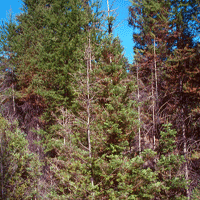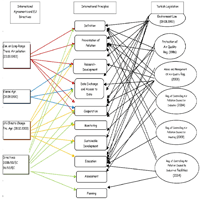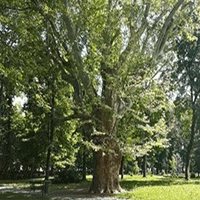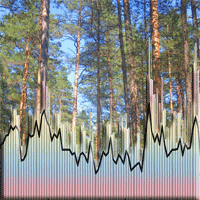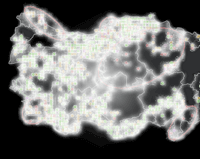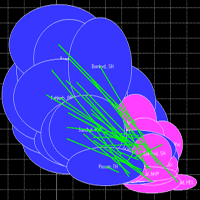
Growth patterns of forest stands - the response towards pollutants and climatic impact
iForest - Biogeosciences and Forestry, Volume 2, Issue 1, Pages 4-6 (2009)
doi: https://doi.org/10.3832/ifor0472-002
Published: Jan 21, 2009 - Copyright © 2009 SISEF
Research Articles
Collection/Special Issue: Cost Action E29 Meeting 2008 - Istanbul (Turkey)
Future Monitoring and Research Needs for Forest Ecosystems
Guest Editors: Marcus Schaub (WSL, Birmensdorf, CH)
Abstract
Dendroecological analysis of tree and stand growth patterns is discussed as an appropriate tool to quantify response of a forest stand to changing environmental factors, and evidence is provided that the response of trees to current environmental influences can be traced by high resolution measurements of diameter increment.
Keywords
Dendroecology, Growth response, Autocorrelation, Sensitivity
Authors’ Info
Authors’ address
Johann Heinrich von Thünen Institute, Federal Research Institute for Rural Areas, Forestry and Fisheries, Institute for Forest Ecology and Forest Inventory, 16225 Eberswalde, Alfred-Möller-Straße 1 (Germany)
Corresponding author
Paper Info
Citation
Beck W (2009). Growth patterns of forest stands - the response towards pollutants and climatic impact. iForest 2: 4-6. - doi: 10.3832/ifor0472-002
Academic Editor
Marcus Schaub
Paper history
Received: Apr 08, 2008
Accepted: Dec 09, 2008
First online: Jan 21, 2009
Publication Date: Jan 21, 2009
Publication Time: 1.43 months
Copyright Information
© SISEF - The Italian Society of Silviculture and Forest Ecology 2009
Open Access
This article is distributed under the terms of the Creative Commons Attribution-Non Commercial 4.0 International (https://creativecommons.org/licenses/by-nc/4.0/), which permits unrestricted use, distribution, and reproduction in any medium, provided you give appropriate credit to the original author(s) and the source, provide a link to the Creative Commons license, and indicate if changes were made.
Web Metrics
Breakdown by View Type
Article Usage
Total Article Views: 51905
(from publication date up to now)
Breakdown by View Type
HTML Page Views: 42467
Abstract Page Views: 3812
PDF Downloads: 4398
Citation/Reference Downloads: 48
XML Downloads: 1180
Web Metrics
Days since publication: 6173
Overall contacts: 51905
Avg. contacts per week: 58.86
Citation Metrics
Article Citations
Article citations are based on data periodically collected from the Clarivate Web of Science web site
(last update: Mar 2025)
Total number of cites (since 2009): 18
Average cites per year: 1.06
Publication Metrics
by Dimensions ©
Articles citing this article
List of the papers citing this article based on CrossRef Cited-by.
References
Finding best regression approach for description of climate-growth relationships by floating time spans of varying width. In: “TRACE - Tree rings in Archaeology, Climatology and Ecology”, Volume 5; Proceedings of the Dendro-Symposium 2006 (Tervunen, Belgium, October 20-22, 2006). Schriften des Forschungszentrums Jülich, Reihe Umwelt/Environment, Band/Volume 74, pp. 44-53.
Gscholar
Growth response to climate in a multi-species tree-ring network in the West Carpathian Tatra Mountains, Poland and Slovakia. Tree Physiology 27: 689-702.
Gscholar
Methods of dendrochronology: applications in the environmental sciences. Kluwer Academic Publishers, Dordrecht, Boston, London.
Gscholar
Tree rings and climate. The Blackburn Press, Reprint of Second Printing. Academic Press, London, UK.
Gscholar
Neuartige Zuwachsdepressionen bei Buchen. AFZ/Der Wald 58, vol. 1, pp. 42 - 45.
Gscholar
Analysis of time series structure: SSA and related techniques. Monographs on statistics and applied probability 90, Chapman and Hall/CRC.
Gscholar
Ein Verfahren zur Trendanalyse von Zuwachsreihen. In: “Modelle zu automatisierten Zuwachsmeß- und Auswertetechniken, klimaorientierte Wachstumsmodelle, Inventurmethoden und ihre Anwendungen”. Schriften aus der Forstlichen Fakultät der Universität Göttingen und der Niedersächsischen Forstlichen Versuchsanstalt, Band 106, pp. 103-121.
Gscholar
Trendanalysen von Zuwachsreihen mit Hilfe von Spline-Regression, Zustandsraum- und nichtparametrischen Regressionsmodellen. In: “Tagungsberichte der Arbeitsgruppe Ökologie”, Heft 4.
Gscholar
Zeitreihenanalyse, 5. Auflage, R. Oldenbourg Verlag München, Wien.
Gscholar
Der Jahrring. Standort, Methodik, Zeit und Klima in der Dendrochronologie. Verlag Paul Haupt, Bern-Stuttgart, Germany.
Gscholar

